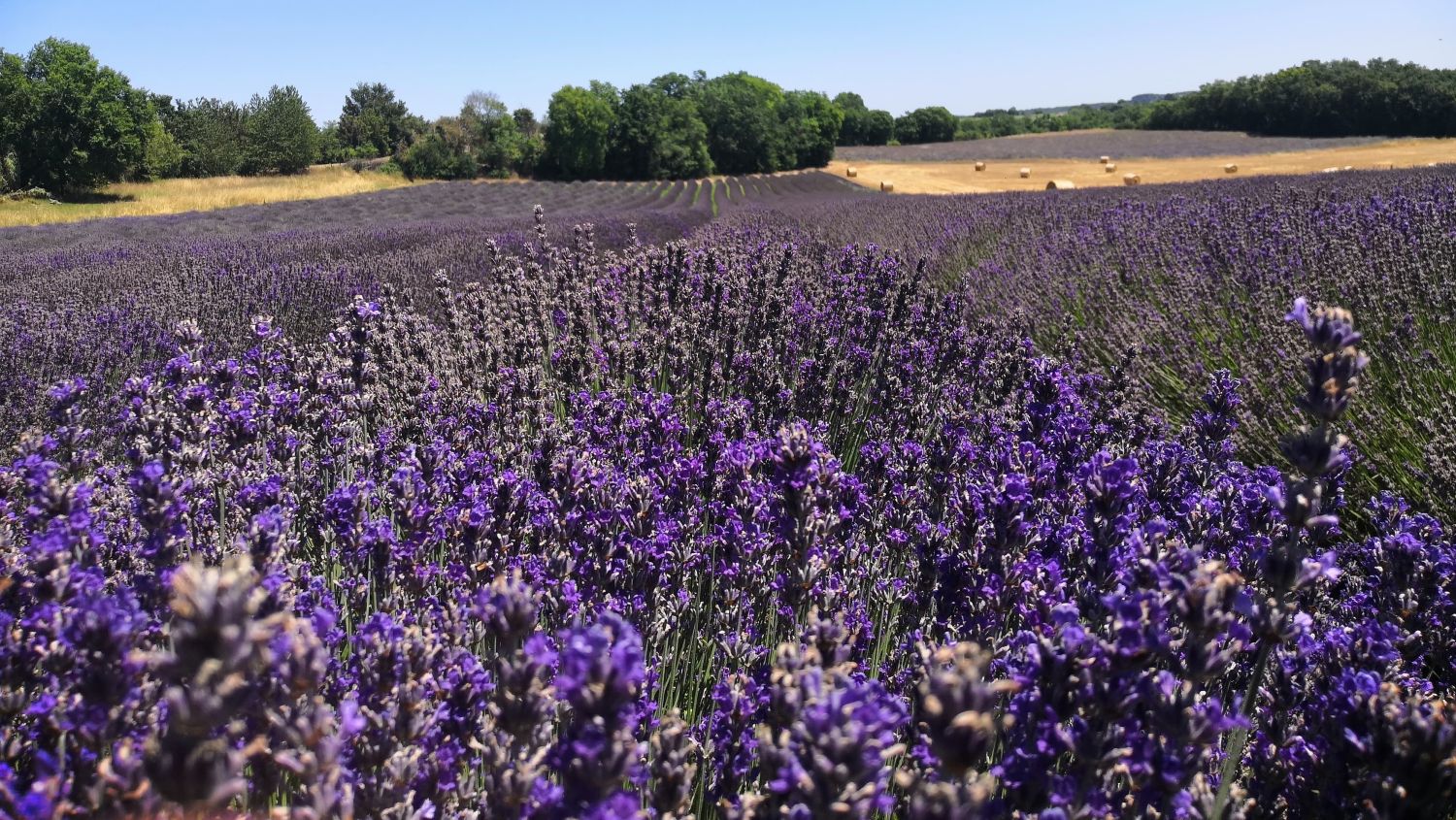Officinal Lavender (Lavandula angustifolia)

Botanical Characteristics
- Scientific Name : Lavandula angustifolia
- Family : Lamiaceae
- Origin : Mediterranean regions
Description
Lavandula angustifolia, commonly known as Lavender, is a perennial herbaceous plant belonging to the Lamiaceae family. It is characterized by its slender woody stems and narrow, lanceolate, often silvery leaves. The flowers, grouped in conical spikes, range from pale violet to dark violet, emitting a characteristic fragrance.
Climate and Cultivation
- Lavender thrives in a sunny and dry climate.
- It prefers limestone soils that are well-drained.
- It is cultivated by seeding (true lavender) or by cuttings (classic selected lavender).
In Mythology
The name "lavender" comes from the Latin 'lavare,' meaning to wash; this plant was used since Roman times to perfume laundry and baths. In various cultures, lavender was often used as a means to purify the air and ward off negative influences. It was sometimes placed in spaces to bring positive energy and repel evil spirits. Lavender is renowned for its soothing properties. It was often used in sachets, pillows, or baths to promote relaxation, sleep, and well-being. In some traditions, lavender was associated with goddesses of love and beauty. For example, the Roman goddess Venus (or the Greek goddess Aphrodite) was sometimes linked to aromatic plants, including lavender. Lavender was often used in ceremonies and rituals, sometimes associated with religious or spiritual celebrations. The burning of dried lavender or the use of lavender essential oil could be integrated into these practices.
Keywords
Peace, serenity, relaxation, gentleness, harmony, balance
Essential Oil of Lavender
Origin and Extraction : Lavender Essential Oil is extracted from the flowering tops of the Lavandula angustifolia plant, commonly known as True Lavender or English Lavender. Native to Mediterranean regions, it is renowned for its soothing fragrance and numerous therapeutic properties. Extraction is done through steam distillation.
Appearance and Fragrance : This essential oil is characterized by its clear hue, ranging from pale yellow to colorless. Its scent is fresh, floral, and herbaceous, evoking the classic aroma of lavender.
Chemical Composition : Lavender Essential Oil owes its properties to a diverse chemical composition, primarily including linalool, linalyl acetate, camphor, and 1,8 cineole. These components impart to the oil its calming, anti-inflammatory, and antiseptic characteristics.
Historical Virtues
Soothing and Relaxing Properties : Lavender is famous for its soothing effect on the nervous system. Its gentle and floral scent has relaxing properties that can help reduce stress, anxiety, promote relaxation, and sleep.
Relief from Headaches : Topical application or inhalation of lavender can help alleviate headaches and migraines.
Antiseptic and Healing for the Skin : Lavender essential oil has antiseptic properties that make it useful for treating minor cuts, burns, and skin rashes. It can also help accelerate wound healing.
Anti-inflammatory : Lavender essential oil has anti-inflammatory properties that can be beneficial in relieving skin inflammations, insect bites, and other irritations.
Insect Repellent : Lavender has natural repellent properties that can help repel certain insects. It can be used as diluted essential oil on the skin or in diffuser blends.
Note : Versatile and valued for its numerous qualities, Lavender Essential Oil remains an essential option in aromatherapy and natural care, offering a soothing olfactory experience and significant benefits.
Hydrolat of Lavender
Origin and Production Process : Hydrolat of Lavandula angustifolia is a product derived from steam distillation of the flowering tops of the plant Lavandula angustifolia, commonly known as True Lavender or Lavender. During this process, the distillation water collects the volatile compounds of the plant, as well as hydrosoluble molecules, giving rise to the hydrolat.
Appearance and Fragrance : This hydrolat is presented as clear water, with a soft, floral, and herbaceous scent characteristic of lavender. Its delicate aroma makes it a highly appreciated product in aromatherapy and skincare.
Historical Virtues
For Consumption : Ideal in infusion, smoothie, or in desserts like crème brûlée, it pairs very well with fruit salads, strawberries, chocolate, and apple juice.
On the Skin : It is gentle, soothing, moisturizing, and antibacterial. It can be used to cleanse the face, soothe skin irritations, redness, and itching. It can also relieve pain from sunburns or insect bites due to its anti-inflammatory effect.
On the Hair : It is a very good ally to prevent lice if sprayed behind the ears and neck in the morning.
In the Environment : Sprayed in the air, hydrolat of Lavandula angustifolia can create a soothing atmosphere, promoting relaxation and emotional well-being. It will be effective against stress, anxiety, and insomnia.
Note : Hydrolat of Lavandula angustifolia, with its soothing properties and multiple uses, is a valuable ally in natural well-being and beauty rituals, offering a delicate aromatic experience and nourished and revitalized skin.
WARNING
The information on properties, indications, and usage comes from reliable sources in aromatherapy, hydrolatherapy, and phytotherapy, such as specialized books and reputable websites. These data are frequently found in these sources and are often supported by observations in scientific environments. However, it is essential to emphasize that those informations are provided for informational purposes only. It should not be considered as medical advice and cannot engage our responsibility. For any therapeutic use, it is strongly recommended to consult a qualified healthcare professional.